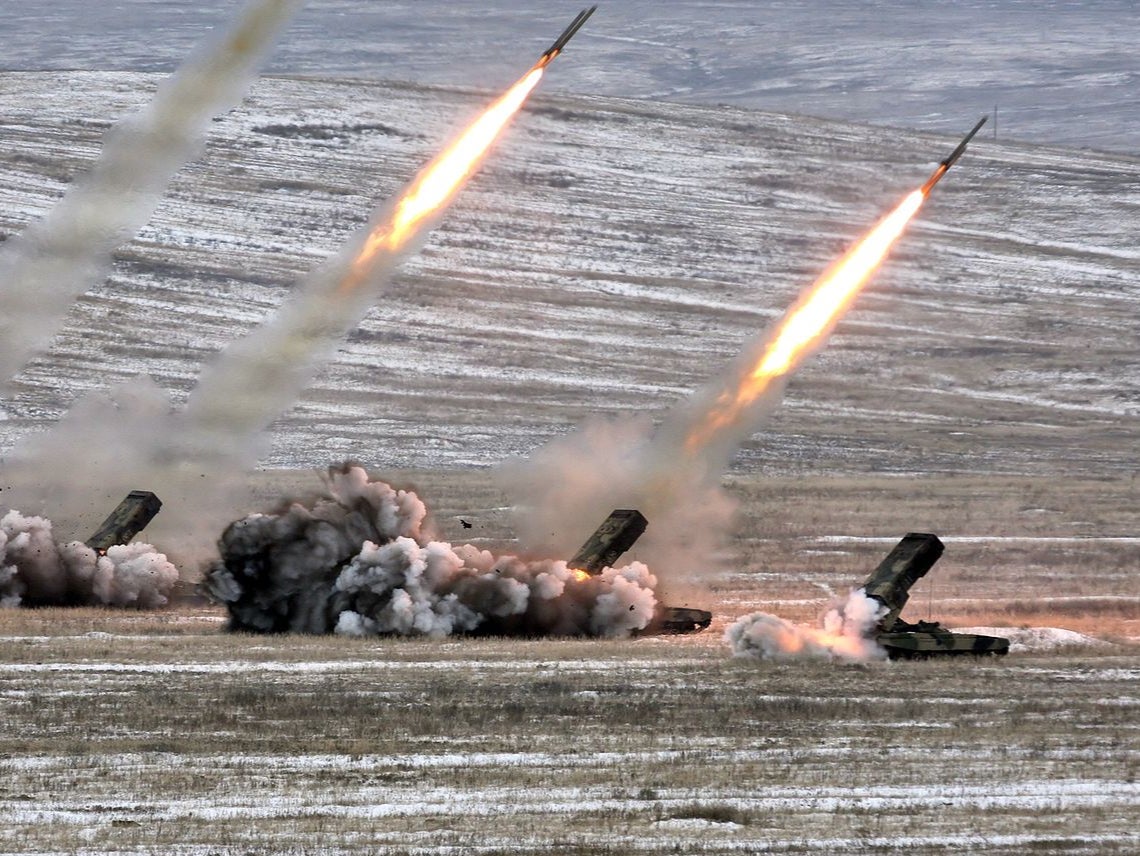Russia has admitted using thermobaric weapons in Ukraine, says UK
The devastating weapons can rupture lungs and internal organs

Your support helps us to tell the story
From reproductive rights to climate change to Big Tech, The Independent is on the ground when the story is developing. Whether it's investigating the financials of Elon Musk's pro-Trump PAC or producing our latest documentary, 'The A Word', which shines a light on the American women fighting for reproductive rights, we know how important it is to parse out the facts from the messaging.
At such a critical moment in US history, we need reporters on the ground. Your donation allows us to keep sending journalists to speak to both sides of the story.
The Independent is trusted by Americans across the entire political spectrum. And unlike many other quality news outlets, we choose not to lock Americans out of our reporting and analysis with paywalls. We believe quality journalism should be available to everyone, paid for by those who can afford it.
Your support makes all the difference.Russia has confirmed it has used thermobaric weapons in Ukraine, according to the UK’s Ministry of Defence.
The MoD said Russia admitted deploying the TOS-1A weapon system, which uses thermobaric rockets.
Also known as vacuum bombs, they suck in oxygen and generate a powerful explosion that can have a devastating impact on victims – especially in an enclosed space.
“The Russian MoD has confirmed the use of the TOS-1A weapon system in Ukraine,” the MoD wrote on Twitter. “The TOS-1A uses thermobaric rockets, creating incendiary and blast effects.”
The MoD has not said where or when Russia issued the confirmation. A spokesperson could not provide further information when contacted by The Independent.
Ukraine’s ambassador to the US previously claimed Russia used a vacuum bomb on the fifth day of its invasion. Oksana Markarova did not reveal where it was allegedly used.
Earlier, the Pentagon said Russian mobile launchers for thermobaric weapons were spotted inside Ukraine, but could not confirm their use.
Russia has also been accused of firing cluster munitions, which release smaller ‘bomblets’ over a wide area and can lead to mass casualties among civilians in populated areas.
Amnesty International said cluster bombs were used in a Russian attack that killed a child and two adults hiding in a pre-school in northeastern Ukraine.
A second child was wounded in the shelling on the Sonechko nursery and kindergarten in the city of Okhtyrka on 25 February.
Amnesty said the strike may constitute a war crime.
“There is no possible justification for dropping cluster munitions in populated areas, let alone near a school,” said Agnès Callamard, Amnesty’s Secretary-General.
“It is stomach-turning to see an indiscriminate attack on a nursery and kindergarten where civilians are seeking safe haven.”
The Kremlin continues to deny targeting civilians.
Russia has deployed thermobaric weapons before. There were used in Chechnya in 1999, and Bashar al-Assad reportedly used Russian-made vacuum bombs in Syria.
The US has used them in Vietnam and Afghanistan.
A CIA study cited by Human Rights Watch states vacuum bombs can “obliterate” anybody “near the ignition point”.
The US intelligence agency adds: “Those at the fringe are likely to suffer many internal, thus invisible injuries, including burst eardrums and crushed inner ear organs, severe concussions, ruptured lungs and internal organs, and possibly blindness.”
Join our commenting forum
Join thought-provoking conversations, follow other Independent readers and see their replies
Comments